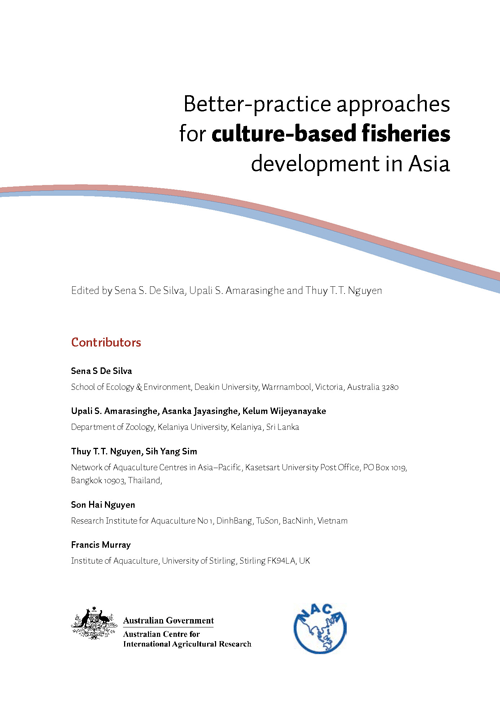Better-practice approaches for culture-based fisheries development in Asia
12 April 2006 | 1678 Downloads | .pdf | 1.88 MB | Australia, Better management practices, Cambodia, Culture-based fisheries, Freshwater finfish, Indonesia, Inland aquaculture, Sri Lanka, Education and Training, Vietnam
The primary objective of this manual is to provide guidelines for attaining better practices in culture-based fisheries, an emerging practice in rural areas in the Asian region. It deals with the principles of culture-based fishery practices, primarily based on relatively long-term experiences in Sri Lanka and Vietnam. It is not only targeted at researchers per se, but also at stakeholders at the grass root levels, as well as planners and policy developers, particularly those of Asian nations embarking on culture-based fisheries as a strategy to enhance fish food production in rural areas. As such, the manual does not deal with the dynamics and interactions of stocked populations. It deals with the gross factors that are applicable to improving fish yields and therefore revenue; and sustaining culture based fisheries as a development activity in the long-term. The manual addresses the constraints to culture-based fisheries development in the region, and provides guidelines on ways and means of overcoming such constraints.
This manual is the final compilation of the experiences in Sri Lanka and Vietnam, together with the discussions that occurred at the three workshops held in the three Asian countries in October 2005. The manual is divided into two parts: Part 1 provides general information on what is called "better-practice approaches" to culture-based fisheries; and Part 2 provides experiences from Sri Lanka and Vietnam and includes a marketing study.
The manual is aimed at a variety of readers, including farmers, extension workers and policy makers. It is also available in Vietnamese and Lao translations.
Copyright, all rights reserved.

